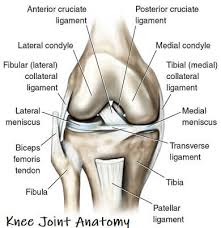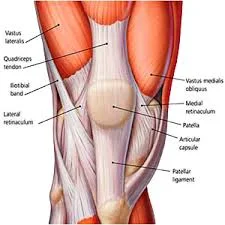Knee Pain: Introduction to the Anatomy of the Knee and the Top Causes of Pain
/Okay everyone… ready or not, this week we are switching topics from back pain to KNEE PAIN!
As the Rehab Coordinator for the Los Angeles Football Club professional soccer team, I get a lot of questions regarding knee pain, the causes and how to ultimately fix it. Regardless if you are a professional athlete running on the field or have pain squatting down to pick up your grandchild, the ‘principles’ are all the same.
Overall, knee pain is a bit like back pain; it seems like everyone has it, and not many people really understand what they can do about it. Additionally, many people are under the impression, often via trusted advice, that they ‘just have to live with it’ because they are ‘getting older’.
If this sounds like YOU, I think you’re really going to enjoy this next series of articles. I’m going to start with some basic information today, and then I’ll be able to offer valuable information about how to eliminate knee pain in future articles.
So let’s get down to business and start looking at the anatomy of the knee, from the joints, to the ligaments and muscles, as well as a few other structures.
The Joints:
A closer look at the knee joint.
· Most people think of the knee as a joint which only goes forward and back. Although minimal, there is twisting that can happen which can cause a lot of damage as well!
· If you look down at your feet right now, are they in line with your knees? Do you or a loved one tend to walk ‘duck footed’ with your feet ‘turned out’?
· Chances are that at least one of your feet is pointed outwards, which places a lot of stress on both your knee joint as well as the kneecap region.
The Ligaments & Special Structures:
· You have two important ligaments deep inside the knee called the ACL and PCL. They primarily resist the knee from shifting too far forward, backward and twisting too much. You see a lot of these type of injuries in activities such as soccer, football and skiing that require a lot of change of direction.
· You have the MCL on the inside and LCL on the outside of the knee which protect from excessive side to side motion.
· Inside the knee, you have two soft tissue rings call the menisci which both provide extra cushion within the knee. Often times, you see golfers dealing with this type of injury because of the amount of twisting and compression involved with the swing.
The Muscles:
Knee joint diagram with muscles and tendons.
· You have the ‘quadriceps’ group in front of your thigh which help straighten and stabilize your knee. You really need great ‘quad strength’ to stand up, use the stairs and simply walk with your friends and family.
· Behind your thigh, the ‘hamstring’ group is incredibly important in propelling your body forward as well as slowing you down. Often ‘tight’, this muscle group can also contribute to other conditions such as back pain.
· Many times overlooked, the ‘calf’ muscle group helps your body push forward every time you take a step. Improper shoe selection, poor stretching and not enough strengthening of this area can contribute to annoying knee pain.
Now that I’ve explained some of the anatomy of the knee, what if I told you the CAUSE of the knee pain is OFTEN SOMEWHERE ELSE?!
You see, the body is a beautiful and complex system. When I look at movement at the knee, I always look at the areas above and below the actual area of pain.
The most common CAUSES of knee pain:
· Improper ‘tracking’ of the knee
· Lack of hip strength
· Poor ‘core’ trunk stability
· Not enough ankle flexibility
· An imbalance causing your body to movement incorrectly
As we discuss these various CAUSES of knee pain in future articles; I’ll make sense of the anatomy, why squats are actually GOOD for you, the fact x-rays and MRI’s can do more harm than good and how to overcome your own knee pain so you can be healthy and active in 2019. Just stay tuned!








